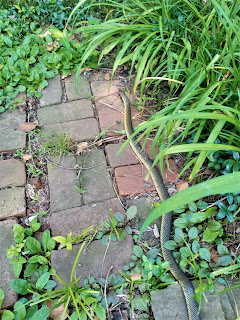Keep your fresh-cut flowers longer without using floral preservatives by cutting your flowers before they bloom or buying an arrangement from the grower. When you start out with flowers that are ready to bloom they will open up throughout the week.
I enjoy cutting flowers and making arrangements for my home decor. I like the idea of setting a cheerful floral arrangement on the breakfast table and prefer that the flowers stay fresh for more than a day. Through trial and error, I learned how to keep cut flowers fresher and longer.
One way to keep your cut flowers fresh longer is to cut the flowers for your arrangement or bouquet in the morning when the temperature is cooler. Look for flower buds that are beginning to open. Cut the flower stem diagonally with a clean and sharp garden scissor .
.
Once inside I like to rinse the flowers off to remove any garden pests and then I will remove the leaves from the stems so that the leaves are not inside the vase of water, leaves that are submerged in water will decay quickly.
I will leave outward leaves as a little greenery looks good in a bouquet. After I have trimmed the leaves from the stems I will look for a vase to accommodate my cut flowers. I like to choose a vase that will provide the stems with plenty of room. Wash the vase before you use it with hot soapy water and rinse well.
Fill the vase with three inches of tepid filtered water. (water that has no chemicals, pipe sediments, trace minerals, or bacteria). Your floral bouquet will keep fresh longer when the water is fresh and clean. Add your cut flowers to the vase.
I will leave outward leaves as a little greenery looks good in a bouquet. After I have trimmed the leaves from the stems I will look for a vase to accommodate my cut flowers. I like to choose a vase that will provide the stems with plenty of room. Wash the vase before you use it with hot soapy water and rinse well.
Fill the vase with three inches of tepid filtered water. (water that has no chemicals, pipe sediments, trace minerals, or bacteria). Your floral bouquet will keep fresh longer when the water is fresh and clean. Add your cut flowers to the vase.
Maintain a fresh-cut appearance by removing the flowers from the vase daily. Cut the stems of the flowers and empty the water from the vase. Wash the vase with hot soapy water before you refill vase with filtered water. Rearrange the flowers into the vase.
By changing the vase water daily and cutting the flower stems you will keep your fresh-cut flowers longer. |


















